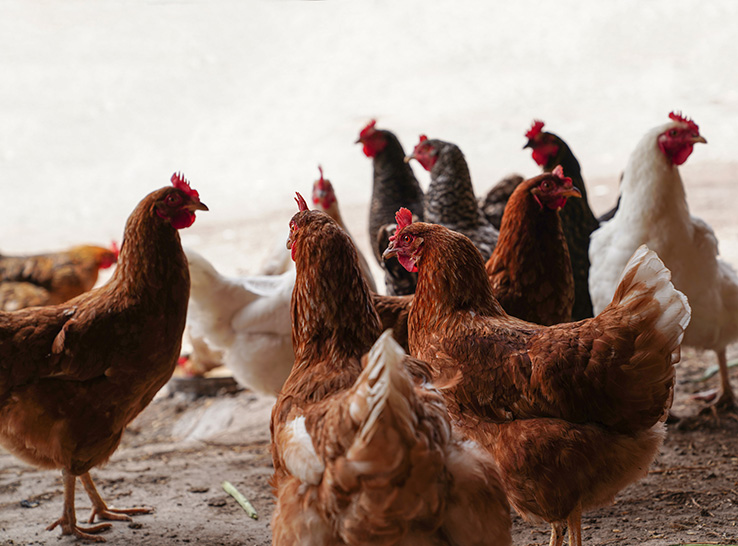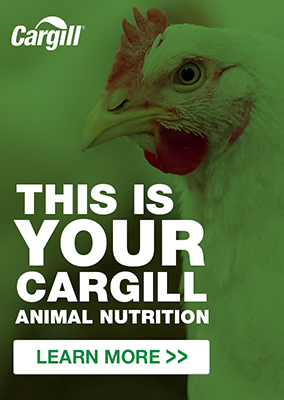A technology from Cargill may overcome a barrier the layer industry has faced in understanding the nutrition and performance of its flocks, paving the way to reduced feed costs and higher egg production through better nutrition.
Improving laying persistency is a priority for the industry. Not only does it help meet growing global demand for a nutritious food source, but longer periods of laying can also bring reduced nitrogen emissions, improving sustainability credentials.1
Research has linked longevity in egg production, liver condition and the fat pad of birds; however, accurately measuring the fat pad in live production has proved to be a challenge.
With the launch of REVEAL™ Layers, a non-invasive approach using near-infrared (NIR) technology with data presented on a smartphone, this could change.
“We’ve chosen this option because it is easy to use, it’s relatively cheap and you can scan a lot of hens to get a good indication of the body-fat level of a flock,” explained Lieske van Eck, senior research scientist for Cargill.
“You use a handheld, small NIR device; you put it on a bird; you scan it three times, taking around half a minute to a minute; and you immediately get results of the hen fat condition on your phone.”
Costly early body-condition issues
A bird’s individual fat level is of less interest to producers than overall flock data, which can be used to make nutritional changes and optimize flock body condition.
The use of REVEAL Layers has also allowed van Eck and her colleagues to make connections between initial trials and field data. A key finding is that the fatter hens are at the start of egg production, the lower the laying persistency, with an earlier drop off as they age.
“When we started this, we were expecting that hens at the end of the rearing phase need to have more body fat. We thought when they get into peak production, they probably need some reserves to sustain bodyweight growth and increasing egg production,” van Eck said.
“But it turns out that over-fat hens are a problem. This was quite new to us, and it’s what we’re now doing further work on.”
Van Eck used an example of using REVEAL Layers with one customer to illustrate what it can do: Analysis of body-fat levels at the start of the work showed that the birds were over-fat. This led to making changes to energy and oil levels in the birds’ diets and, ultimately, better performance than what the producer had been used to.
The benefits that producers can hope to achieve depend on the dietary starting point and current production. But in field studies, scientists have recorded improvements between six and 20 eggs per henhouse over the production period.
The next level of understanding is likely to come through using the standard measurement technique in a more holistic way, van Eck explained, which can involve looking at liver functioning and exploring ways to ensure that over a long period, birds do not get over-fat. This can include the use of novel feed additives to improve outcomes.
US rollout observations
A key advantage of the tool is that it doesn’t require any hens to be euthanized. Research on body condition and egg production at Cargill’s research facilities in the Netherlands and the US has grown more ambitious in recent years, monitoring laying hens on different diets to up to 90 weeks old or even more.
Until recently, though, body-condition analysis has been done using dissection.
Following successful field pilots with customers in the US, REVEAL Layers is now being rolled out there. Data gathering is ongoing, but some of the trends look like those in Europe, according to Christopher Eagleson, PhD, poultry nutritionist for the company.
“Early on, looking at the flocks, they seem to be a little on the heavy side as far as fat composition. Then, with dietary changes, they’ve slowly come back in line with the curve. Maybe this is something we can understand about our feeding style in the US,” he noted.
“Moving a little quicker through the different compositions of the diets may be something we implement going forward, to be able to ensure that hens are not putting on that fat early on.”
There is interest in the technology from both the customer and genetics sides in the US, he continued, with the time-saving element being a big draw.
“This is a process that you can do continually throughout the life of the flock, and you’re not having to go in and take out five or 10 birds and hope that they were a true representation of the flock. Now you can scan as many birds as you like,” Eagleson said.
“However, a lot of times what we’re seeing is we can do about 80 birds in an hour and a half or so, whether they’re caged or cage-free,” he said.
Mastering feed markets
Although corn-soy diets have tended to dominate US poultry production, there are pressures affecting the thinking of producers and nutritionists, Eagleson noted. An abundance of low-cost energy sources for poultry diets, such as corn, may be a thing of the past, with added competition on top of other arms of agriculture, namely the biofuels industry.
Here too, REVEAL Layers could make a difference.
“Swine, turkeys, broilers and now biofuels — that’s all competition for the same energy source. I think precisely understanding the nutrition of the birds using this technology gives us some advantage, meaning that, in some situations, you can free up some energy use and avoid having to try and find some of these high-dollar feed sources,” he added.
Editor’s note: Content on Modern Poultry’s Industry Insights pages is provided and/or commissioned by our sponsors, who assume full responsibility for its accuracy and compliance.
1 Bain MM, Nys Y, Dunn IC. Increasing persistency in lay and stabilising egg quality in longer laying cycles. What are the challenges? Brit poult sci. 2016;57(3):330-338.








